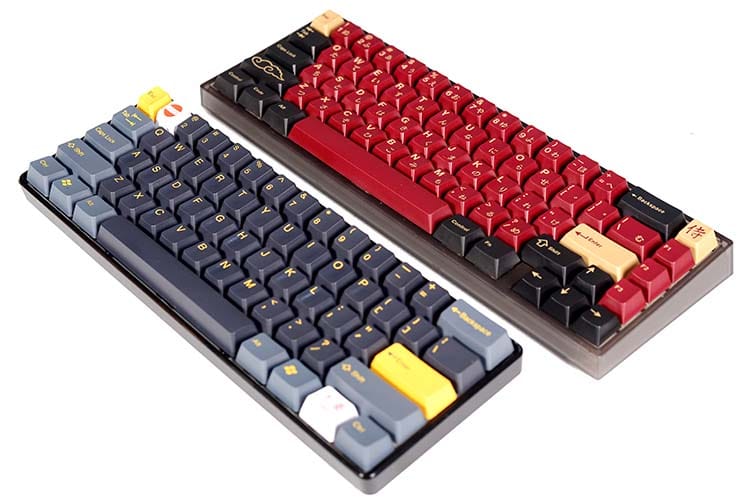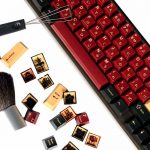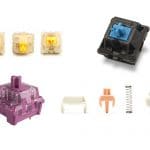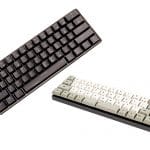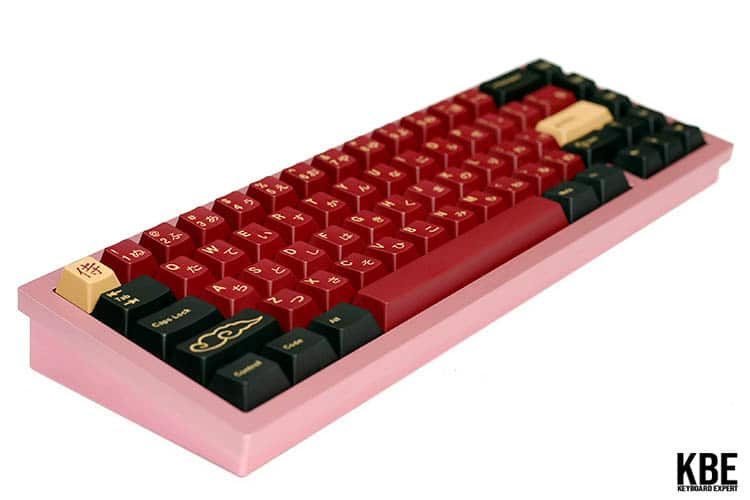
If you are a tech enthusiast, a PC gamer, or someone who frequently lurks around the internet, then you have undoubtedly heard about custom keyboards. Custom mechanical keyboards have been the raze of the internet and have captured the interest of many high-profile streamers and personalities, such as Tfue, Linus Sebastian of Linustechtips, and Dave2D. But with that said, most people still do not have a clear understanding of what a custom keyboard is.
In a nutshell, custom mechanical keyboards are specialized keyboards that allow you to handpick the parts to fit your needs and preferred typing experience. These usually have more premium components such as an aluminum chassis and brass weights and have several features that are typically not found in production keyboards.
In this article, we will be diving deeper into custom mechanical keyboards. We are going to learn what makes them unique from prebuilt keyboards, as well as all the parts that you will need in your build.
We will also be talking about some of the things that you have to consider before entering this hobby. Keep on scrolling to find out more.
Custom Keyboard vs. Prebuilt Keyboard
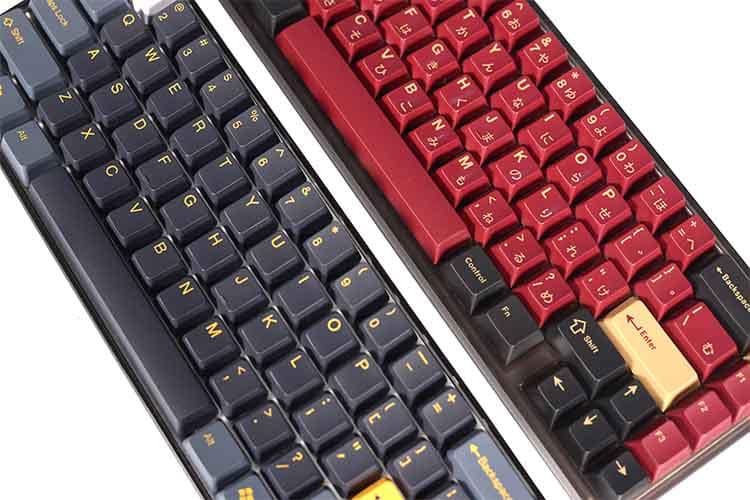
Before we get started, let us first differentiate a custom keyboard from a prebuilt keyboard. When we are talking about prebuilt keyboards, what we are referring to are the ones that are manufactured by mainstream brands such as Razer, Logitech G, Steelseries, etc. And as its name suggests, these keyboards are already pre-assembled from the factory.
There isn’t anything wrong with these keyboards. These have served their purpose for many years and have been used by renowned E-Sports players and many professionals in different fields worldwide. However, these keyboards aren’t perfect.
Aside from having limited customizability, most prebuilt keyboards suffer from various issues such as stabilizer rattle, poor acoustics, and subpar typing feel. These have led to the rise of the enthusiast and custom keyboard community.
When we are talking about custom keyboards, we are referring to the custom kits available in the market. Some examples are the kits that are manufactured by brands such as KBDFans, Cannonkeys, Greystudio, Rama, etc.
Custom keyboards usually have more complex internals compared to prebuilt keyboards and have superior aesthetics and acoustics to their prebuilt counterparts. We will learn more about the different parts of custom keyboard kits in the following sections.
What is a Custom Keyboard?
Anatomy of a Custom Keyboard
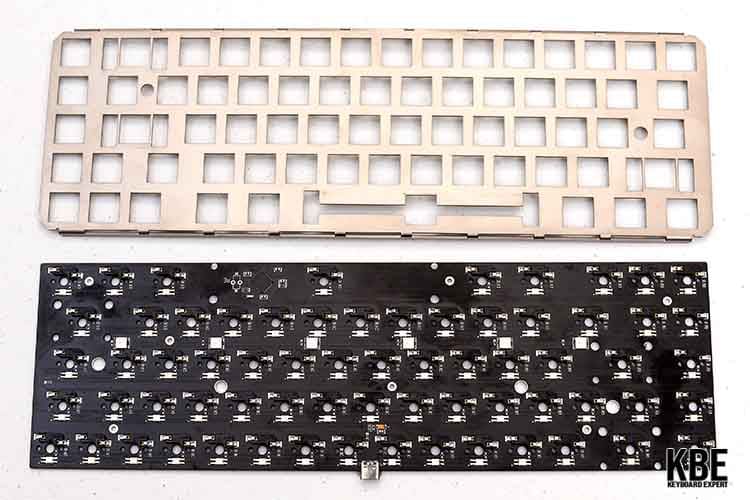
A custom mechanical keyboard is made up of different components. The main components that are included in most keyboard kits are the case, plate, and PCB.
Other necessary components that you have to buy include stabilizers, switches, and keycaps. There are also optional components that can be bought or are added by manufacturers to spice up the aesthetics of your keyboard.
These include different dampening materials, custom USB cables, and additional weights or badges. In this section, we will be quickly going through all of these components.
Main Keyboard Components
Keyboard Case
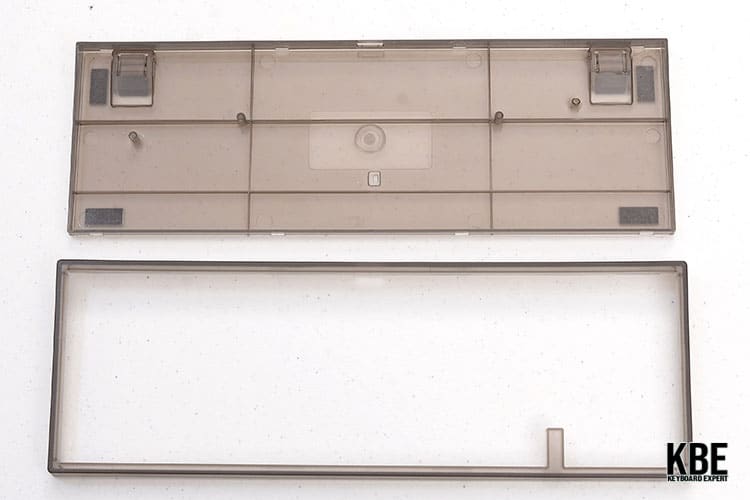
The case is the largest component of your custom mechanical keyboard build. It houses all of the materials and electronics and determines several factors of your keyboard, such as its size, layout, premium feel, rigidity and durability, and acoustics/sound.
For prebuilt keyboards, you typically only get a plastic case. However, for custom keyboards, you are getting a lot of options. The most common case materials for custom keyboards include aluminum, plastic, polycarbonate, wood, and acrylic.
Each case material has its own unique characteristics and sound profile. Most manufacturers allow you to select what kind of case material, as well as the color of the case you want for your custom keyboard build.
Some vendors, such as KBDFans, sell standalone keyboard cases allowing you to select which PCB you want for your build. However, other brands exclusively sell their cases as a part of their keyboard kit. Make sure to properly research the PCBs and plates that are compatible with your case if you are planning to purchase a case that is not part of a keyboard kit.
Keyboard Plate
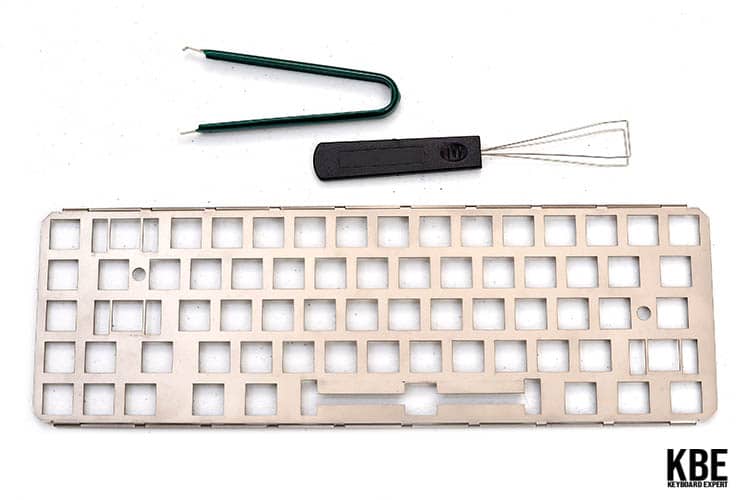
The keyboard plate is the component in your keyboard kit that helps hold your switches in place. They also serve other key functions, such as adding rigidity and stability to your switches, as well as modifying the typing feel and acoustics of your keyboard.
There are several material options that are available such as aluminum, brass, PC, FR4, POM, and many more. Additionally, some keyboard builds allow you to go half-plate, which eliminates the plate in your alpha keys or completely plateless.
The plate also allows you to have different mounting styles such as tray mount, burger mount, top mount or gasket mount, etc. These different mounting styles will play a big role in the stiffness or softness of the typing feel as well as how even and consistent the sound will be.
PCB (Printed Circuit Board)
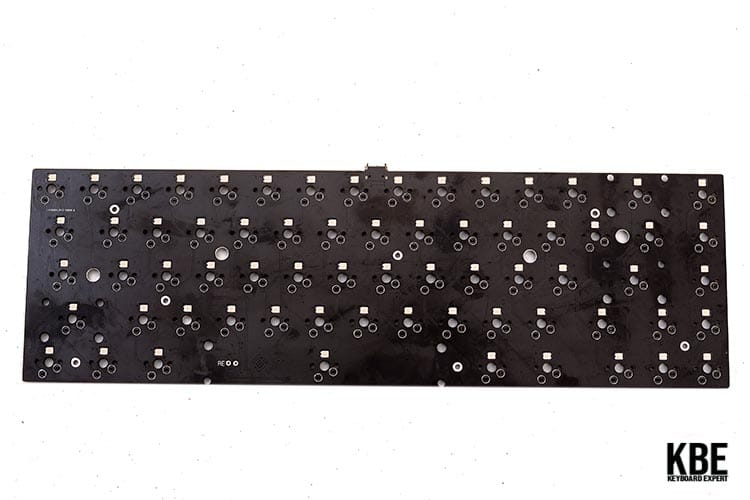
The most important part of any keyboard kit is the printed circuit board or the PCB. This component holds all of the electronics in your keyboard and is basically what allows your keyboard to function.
Additionally, the PCB will determine which software will be compatible with your custom keyboard. We will be diving into the custom keyboard programs later in this article.
Just like with the PCBs found in most prebuilt keyboards, custom keyboard PCBs also allow a wide range of customization options. Most custom PCBs allow you to assign and remap keys, create macros, set the backlight color, etc.
However, you are getting significantly more customization options such as support for different layouts and the ability to add and program underglow RGB.
Also, a lot of new PCBs offer hot-swappable options, which gives you the ability to instantly replace your switches without soldering. There are plenty of things that you can do with a custom keyboard PCB which makes it one of the most powerful components in your keyboard kit.
Keyboard Switches
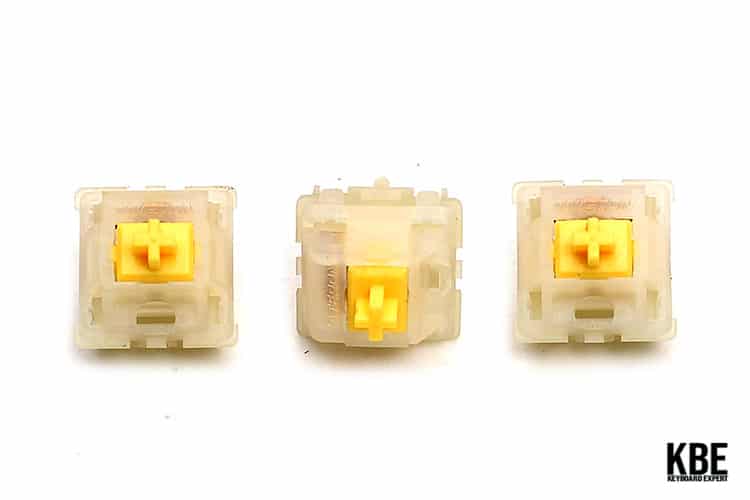
The switches are what you directly interact with and are the component that determines the feel of your keyboard. There are three main switch types that you can choose from: clicky tactile and linear. If you would like to learn more, we have a dedicated article that talks more about key switches.
But in a nutshell, here is a quick rundown of the different switch types. Linear switches have a smooth and linear path with no tactile bumps. Tactile switches, on the other hand, have a tactile bump that can be felt but not heard. And lastly, clicky switches have both a tactile bump as well as an audible click.
There are plenty of brands and switch models that are available in the market. Each switch model is unique and presents its own twist, so it is highly recommended for you to experiment to see which one you like.
Switches also come in two mounting styles, plate mount, and PCB mount. Plate mount switches are more commonly referred to as three-pin switches, while PCB mount switches are better known as five-pin switches. The switch compatibility will largely depend on whether or not your PCB supports PCB-mounted switches.
Keyboard Stabilizers
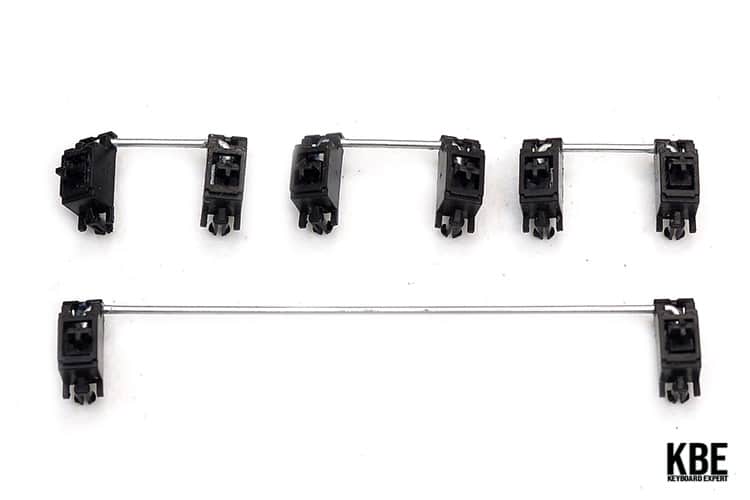
The stabilizers are an essential part of a custom keyboard. These hold the longer keys such as the spacebar, the enter-key, the shift keys, and the backspace key. These determine how smooth and satisfying these longer keys will be.
Stabilizers are often the component that runs into issues with pre-built keyboards. And most of the time, you cannot do anything about it without desoldering and disassembling the keyboard. But with a custom build, you are able to manually tune these stabilizers to perfection.
For custom keyboard builds, there are usually two types of stabilizers that are available. These are your plate mount or PCB mount stabilizers. PCB mount stabilizers are often more desirable since they are more secure, less prone to rattle, and are easier to tune.
Keyboard Keycaps
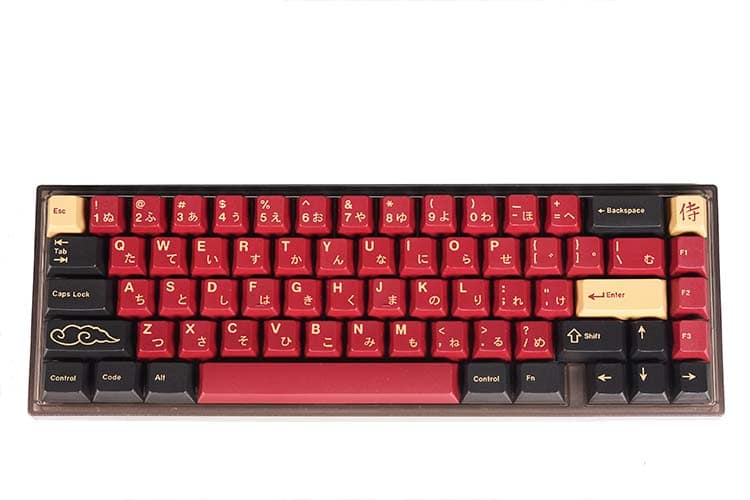
The keycaps are what ties your entire custom build together. They represent the majority of the aesthetics of your keyboard and can also affect the typing sound and typing feel. This component may initially seem to be the most straightforward, but it can still be a fairly complex topic.
Keycaps are usually made of either ABS or PBT plastic. PBT is mostly considered to be more durable and more resistant to shine. However, ABS keycaps generally have better colors, sharper legends and are less prone to warping.
Additionally, not all PBT and ABS keycaps are the same. Some keycaps are clearly superior. To give you an example, high-end keycap brands such as GMK use ABS Plastic on their keycaps. The quality of these keycaps is miles ahead compared to more entry-level ABS keycaps and even some higher-end PBT keycaps.
Another thing that you have to take note of is that there are different keycaps profiles. These affect the typing feel as well as the sound of your keyboard. Some of the common keycap profiles include cherry, XDA, SA, MT3, and DSA.
Additional Keyboard Components
Dampening Material
Dampening materials are optional materials that you can add to your keyboard to help better tune the sound of your build. The goal of these dampening materials is to reduce the hollow sound in your case and to prevent any unnecessary sounds such as case ping.
The most common dampening material for mechanical keyboards is foam. These are usually included in keyboard kits but can also be purchased from vendors such as KBDFans and StupidFish.
You can also make your own DIY dampening solution using shelf liner foam or Sorbothane. Foam is usually applied in the case and in the plate.
Another dampening material that is slowly getting traction in the keyboard hobby is silicone. It is mostly used with aluminum cases to remove any ping or hollowness. They fill up more space compared to foam, making silicone potentially a better alternative to foam.
Dampening materials aren’t always required in a keyboard build. They are just there to give the user more options in terms of how they want their keyboards to sound.
USB Cable
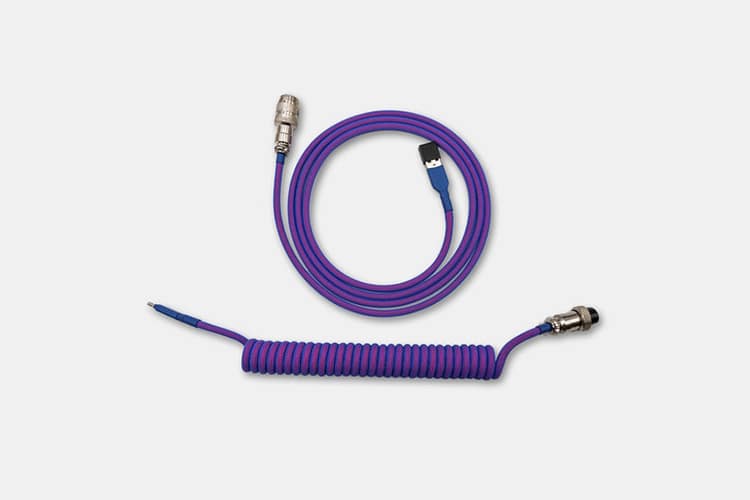
Braided USB cables are an optional accessory that you can include to spice up your keyboard build. These do not serve any additional functions and are purely an aesthetic choice.
There are generally two types of braided cables that you can purchase, a coiled cable or a straight cable. Both options consist of two cables that are connected via an aviator. These cables can be a great option for those who want to preserve the stability of their USB port since you do not have to remove the entire cable every time you wish to detach your keyboard.
Users must be wary of the quality of the coiled cables that they buy. Some cables that are poorly built can potentially damage your PCB. Make sure that the store or seller that you are purchasing from is reputable in the community.
Weight and Badge
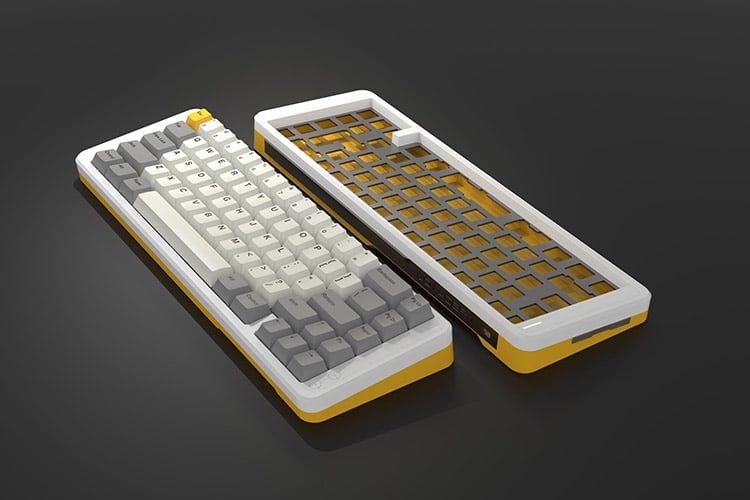
Additional weights and badges are usually reserved for higher-end custom keyboard kits. Weights are usually made of brass and are meant to give additional heft to the case and reduce hollowness.
Most keyboard kits put the brass weight on the bottom of the case and utilize them to add branding. However, some manufacturers also choose to place the weight inside the case.
Badges are similar to weights but serve more of an aesthetic purpose. They are usually found on the top of the case and are meant to be customized to match your keycaps and overall theme.
One thing to note is that weights and badges are specifically designed for certain keyboards. This means that you cannot just add weights or badges to your keyboard if it doesn’t support them.
Also, you can only purchase weights and badges from the manufacturer of the supported keyboard. Some of the well-known models that have weights and badges include the GrayStudio Think6.5 V2 and the Space65.
What is a Custom Keyboard Kit?
When building a custom mechanical keyboard, you do not necessarily have to purchase the parts individually. Most manufacturers sell keyboard kits that have all the major components that you will need in your build.
Also, most higher-end keyboards are only sold as a kit. If you are just starting out and are unaware of all the small nuances in the hobby, we highly recommend picking up a keyboard kit for maximum compatibility.
What Comes With a Custom Keyboard Kit?
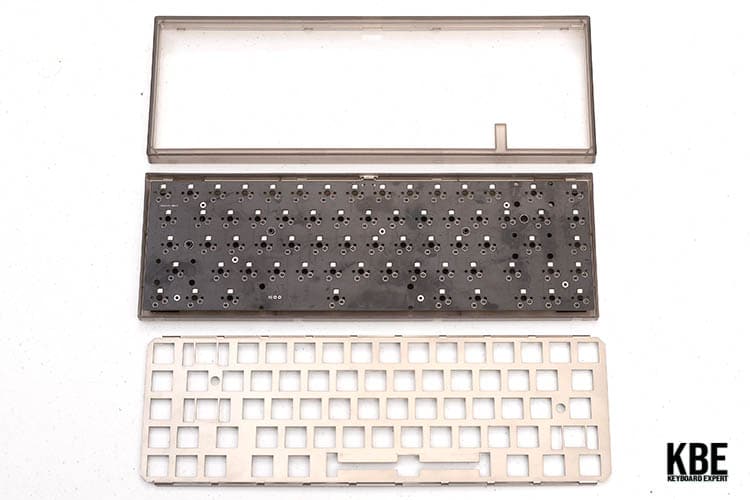
When buying a mechanical keyboard kit, you have to take note that not all of the parts that we have talked about will come with your kit. Most of the time, you will have to purchase switches and keycaps from different vendors.
Budget keyboard kits such as the GK61X, KBD67 Lite, TKC Portico, KPRepublic BM65, Novelkeys NK65, and many more typically include a case, PCB, plate, and stabilizers. These kits have everything you need except for the keycaps and the switches.
Some of the more expensive models, such as the KBD 67 Lite, NK65, and the Portico, include more advanced materials such as case dampening. But for more entry-level kits, you usually have to purchase foam from a third-party vendor such as KBDFans and Stupidfish or make one yourself.
For higher-end keyboard kits, most vendors typically give you more options. You get different case types such as aluminum and polycarbonate (PC) and different plate options such as brass, aluminum, PC, FR4, etc.
Additionally, you can choose the layout of your custom keyboard. This can be typically seen with 60% keyboards that also support the HHKB (Happy Hacking Keyboard) layout. Different types of case dampening material such as plate and case foam, as well as additional gaskets, can be selected.
In a nutshell, the parts included will widely differ from one custom kit to another. If it is your first time building a custom keyboard, we highly advise checking out the manufacturer’s website to learn what you get with the kit and to know what additional parts you will be needing.
Custom Keyboard Software
The parts of your custom keyboard aren’t the only things you can customize. You can also remap your keys and customize your layout to fit your needs. This is done through the keyboard software that is included in your custom mechanical keyboard kit.
The two programs that are utilized by the majority of the custom keyboard PCBs are QMK and VIA. Both programs serve the same function. The main difference is that VIA is an extension of QMK and is meant to be a more straightforward tool. It also has a key switch tester which is very useful during builds.
One thing to take note of is that not all PCBs that feature key remapping are compatible with VIA. Make sure to check the official website of VIA to know if your PCB is keyboard is compatible.
Some custom keyboard kits utilize their own software. Some examples include the GK series such as the GK61X and GK64X that use their own proprietary software, which is only compatible with their own keyboards.
Another example is the Glorious GMMK Pro which primarily uses the Glorious Software. It is QMK compatible, but its current implementation isn’t as good as other QMK/VIA compatible keyboards.
Size and Form Factor
As we have mentioned earlier, you can choose the size and form factor of your custom keyboard build. Some of the most common form factors include 104 Key/100%, TKL/80%, 75%, 65%, 60%, 40%, etc.
The size that you will pick will depend on your use case and personal preference. Check out our dedicated Keyboard Sizes article to learn more.
Why Build a Custom Keyboard?
There are plenty of reasons why you should go for a custom build. Just like with custom-built PCs, custom keyboards are tailor-fitted for your specific needs. If you are looking for a specific theme, a specific layout, specific switches, a specific feel, or a specific sound signature, then you can only get them with custom keyboards.
Also, the typing feel, build quality, and reliability of most mid-range to high-end custom keyboards are next to none. No prebuilt gaming keyboards from mainstream brands will be able to compete.
Also, in terms of quality control, you won’t be getting prebuilt keyboards that are as good as custom keyboards. At the time of writing this article, there are no mass-produced keyboards with lubed switches and stabilizers that are perfectly tuned. All of them will have their fair share of issues.
There are some keyboard sizes and layouts that are outright impossible to get with a prebuilt keyboard. If you are a fan of 65% keyboards, 75% keyboards, and even smaller form factor keyboards such as 40% keyboards, then your best bet will be with custom keyboards.
Brands such as Razer are adapting their products to better attract custom keyboard enthusiasts. However, these brands still have a long way to go before they can match what is available with the custom keyboard hobby.
Should You Build a Custom Keyboard if You Already Have a Prebuilt?
If you already have a custom keyboard, then one question that you might have at the back of your mind is whether or not you should upgrade to a custom keyboard. Of course, the answer will still depend on your needs. After all, some people swear by the prebuilt keyboards that they are already used to.
However, if you truly wish to up your game, then you should certainly upgrade to a custom build. As we mentioned earlier, you will have a better typing feel, better quality components, and a better overall experience.
Why Should You Not Build a Custom Keyboard?
Despite all the positive aspects of the custom keyboard hobby, there are still plenty of reasons why it may not be for you. There are plenty of issues that may hinder your enjoyment of the hobby. Some of the most common ones are Availability and Accessibility, Time Consuming Building Process, and Price.
Availability and Accessibility

The biggest barrier for anyone who wants to get into the custom mechanical keyboard hobby is availability. Most custom keyboard kits are manufactured by smaller companies. This naturally means that they will have a harder time meeting demand compared to larger companies.
The solution that most vendors have come up with is the group buy business model. This is essentially similar to pre-orders, where you have to fully pay upfront for the product and wait for it to arrive. However, this is very problematic since the fulfillment of group buys takes incredibly long.
To give you some perspective, fulfillment for keycaps such as GMK sets typically takes one year. Keyboard group buys, on the other hand, vary from the manufacturer. Well-known manufacturers such as KBDFans can take anywhere from one to three months.
Other manufacturers can take anywhere from six to twelve months. If you think that’s bad, then there’s more. The biggest issue with the group buy model is that once the group buy finishes, there is virtually no way to get the product brand new.
This scarcity is what makes most custom keyboard kits and parts very expensive in the aftermarket. GMK keycaps, for example, are typically two to three times more expensive than their group buy price.
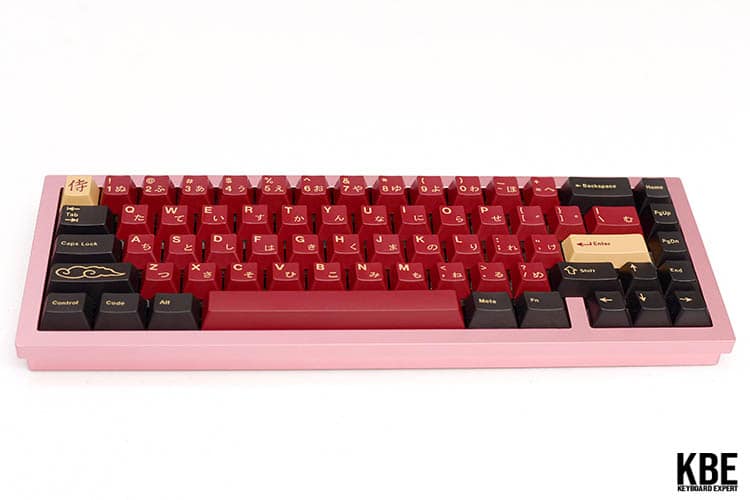
Companies such as Drop are doing their best to have items in stock to combat the issues with the group buy model. Popular sets such as GMK Red Samurai and GMK Laser are constantly in stock on their website. However, we still have a long way to go to meet the current demand.
Additionally, there is no way of knowing whether or not the product that you will be getting is good. Aside from prototype builds and product reviews/showcases of popular reviewers and streamers, it is impossible to determine the overall quality of the item you are buying.
Also, by the time that some of the reviews or prototype builds come out, the group buy period for that specific time may be already over. So even if you want the product that you see in the reviews, it may already be impossible to get them.
For all these reasons, purchasing your desired mechanical keyboard kit or keycap set can be quite a hassle. And for some people, a hobby like this is impossible to enjoy.
Time Consuming Building Process
Building keyboards is an incredibly time-consuming process. Lubing switches alone can potentially take you the entire day. And also, trying to fix the stabilizer rattle and other issues in your board will certainly take a lot of time.
For some, this entire process can be a very fun journey. However, not everyone has the luxury of time. Some users prefer having a keyboard that’s already good on the get-go, even if it means sacrificing certain aspects such as typing feel and aesthetics.
Of course, you can opt for services such as key switch lubing or stabilizer tuning, or you can commission someone to build your keyboard. But, of course, this will add up to the cost of your keyboard build.
Price
Aside from availability, the biggest thing that will turn off a lot of newcomers is the incredibly high price of the hobby. Mechanical keyboards and all of its components are downright expensive. And, unfortunately, that is a pill that you have to swallow before you enter this hobby.
There are, of course, manufacturers that are introducing great-performing low-cost models, and the whole industry is seemingly moving in this direction. Major players such as KBDFans, Rama, Novelkeys, Glorious, and The Key Company (TKC) have been releasing great entry-level models that punch way above their price point.
Products such as the KBD67 Lite, Rama Kara, NK65 Entry Edition, the Glorious GMMK Pro, and the TKC Portico are all great models that are recommended for beginners. There are also more affordable alternatives that are in stock, such as the TOM680, the KPRepublic BM65, the GK61 and GK64, products from Keychron and Royal Kludge (RK), and many more.
But with that said, these keyboards kits still aren’t cheap. This is because you are just paying for the kit alone and will need to purchase additional parts such as key switches, keycaps, stabilizers, lube, etc. And at the end of the day, you will still need to have a budget of about $150 to $200.

The KBE team is dedicated to sharing our knowledge and creating useful resources about computer keyboards. This article was written as a team collaboration, combining our knowledge and years of experience using, building and modding keyboards. Meet the team here.
